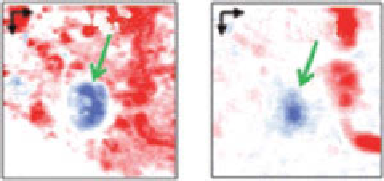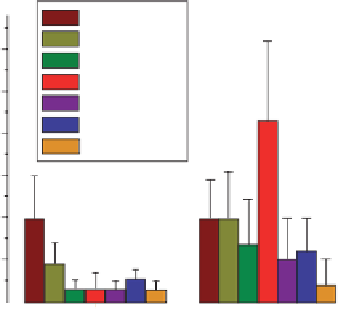Biomedical Engineering Reference
In-Depth Information
(a)
Lysed blood
E2-Crimson
eqFP670
iRFP
mKate2
mNeptune
TagRFP657
3.0
2.5
2.0
1.5
1.0
0.5
0.0
600 nm
680 nm
(b)
(c)
x
x
Tumor
Tumor
y
y
figure 10.17
In vivo
PA images of mouse mammary gland tumor. (a) Comparison of PA
signals of various proteins such as purified irFP, purified E2-Crimson, eqFP670, mKate2,
mneptune, and TagrFP657 at 600 and 680 nm.
In vivo
spectrally resolved PA images of the
tumor and surrounding blood vessels acquired without (b) and with (c) overlaid 4 mm-thick
tissue. Blue represents the tumor, whereas red represents the blood vessels. (reprinted with
permission from ref. [154]. © John Wiley & Sons.)
10.6
conclusions
PAT is a novel premier hybrid biomedical imaging technique, combining strong
optical absorption contrast and high ultrasonic resolution. In this chapter, the follow-
ing topics of PAT have been discussed: (i) basic principles of PAT, (ii) two types of
PAT modalities (i.e., inverse algorithm-based PACT and raster scanning-based PAM),
(iii) intrinsic contrasts for morphological and functional PAT, and (iv) exogenous
contrasts for PAT. Although many contrast agents manipulated by nanotechnology
have been investigated and the results were promising in preclinical PA applications,
so far, any nanostructures have not been approved by the FdA, which is a key hurdle
for clinical translation. The key criterion for the clinical agent must be biodegrad-
ability and biocompatibility. For example, biocompatible metallic nanoplatforms
should be removed from the body so that the long-term heavy metal toxicity must
be excluded. otherwise, the absence of any potential hazards should be proved
with significant long-term metal poisoning studies. once these problems are




Search WWH ::

Custom Search